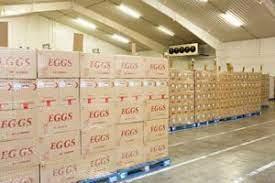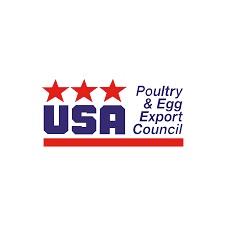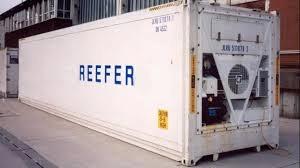 Exports of shell eggs since March have been constrained by availability due to progressive and cumulative depletion of 40 million hens to date as a result of HPAI. Sharp rises in price as a result of supply-demand disequilibrium have made U.S. export prices uncompetitive as denoted by lower volumes and values over successive months. Egg products have also been impacted but to a lesser extent than shell eggs.
Exports of shell eggs since March have been constrained by availability due to progressive and cumulative depletion of 40 million hens to date as a result of HPAI. Sharp rises in price as a result of supply-demand disequilibrium have made U.S. export prices uncompetitive as denoted by lower volumes and values over successive months. Egg products have also been impacted but to a lesser extent than shell eggs.
USDA-FAS data collated by USAPEEC, reflecting export volume and values for shell eggs and egg products are shown in the table below comparing the first ten months of 2021 with 2022:-
|
PRODUCT
|
Jan.-Oct. 2021
|
Jan.-Oct. 2022
|
Difference
|
|
Shell Eggs
|
|
|
|
|
Volume (m. dozen)
|
174.4
|
57.2
|
-117.2 (-67.2%)
|
|
Value ($ million)
|
174.3
|
104.6
|
-69.7 (-39.9%)
|
|
Unit Value ($/dozen)
|
1.00
|
1.82
|
+0.82 (+82.0%)
|
|
Egg Products
|
|
|
|
|
Volume (metric tons)
|
29,634
|
20,627
|
-9,007 (-30.3%)
|
|
Value ($ million)
|
87.8
|
100.8
|
+13.0 (+14.8%)
|
|
Unit Value ($/metric ton)
|
2,963
|
4,887
|
+1,924 (+64.9%)
|
U.S. EXPORTS OF SHELL EGG AND EGG PRODUCTS DURING
JANUARY-October 2022 COMPARED WITH 2021
SHELL EGGS
 Shell egg exports from the U.S. during the first ten months of 2022 decreased by 67.2 percent in volume and 39.9 percent in total value compared to 2021. Unit value was 82 cents per dozen higher to $1.82 per dozen for the ten-month period in 2022 compared to January-October 2021. The top two importers were Canada (40.7 percent of volume) and Hong Kong (25.3 percent), collectively representing 66.0 percent of volume and 69.4 percent of total value.
Shell egg exports from the U.S. during the first ten months of 2022 decreased by 67.2 percent in volume and 39.9 percent in total value compared to 2021. Unit value was 82 cents per dozen higher to $1.82 per dozen for the ten-month period in 2022 compared to January-October 2021. The top two importers were Canada (40.7 percent of volume) and Hong Kong (25.3 percent), collectively representing 66.0 percent of volume and 69.4 percent of total value.
During October the volume of shell egg exports declined 69.1 percent from October 2021 to 4.7 million dozen. Value declined 10.9 percent to $13.1 million attributed to high domestic price and reduced availability as a result of depopulation of 36 million hens due to HPAI from late February through October, offset by transfer of maturing pullets placed as chicks 5 months previously.
Canada was the leading importer of shell eggs in January-October 2022, with 23.3 million dozen representing 40.7 percent of volume and 49.5 percent of the $100.8 million total value of U.S. shipments of shell eggs. Unit price was $1.82 per dozen compared to $2.89 per dozen in September 2022.
During October Canada imported 3.0 million dozen the same as in October 2021 but with a corresponding 243 percent increase in value to $9.6 million with a unit price of $3.20 per dozen. The sharp increase in imports by Canada is attributed to higher consumer demand and depletion of some flocks due to HPAI. The controlled supply situation in Canada inhibits flexibility necessitating imports from the U.S.
Hong Kong was the third-ranked importer of U.S. shell eggs during the first ten months of 2022. The 14.5 million dozen shipped represented 25.3 percent of volume and 16.8 percent of value. Unit price at $1.21 per dozen was $0.84 per dozen below the average prevailing nest-run USDA benchmark price of $2.05* over the first ten months of 2022. This indicates a loss in revenue experienced by shippers presumably operating under contract. During October, Hong Kong imported 0.4 million dozen shell eggs valued at $0.6 million down 92.3 percent in volume and down 87.2 percent in value from October 2021 at a unit price of $1.50 per dozen. During 2021 Hong Kong imported 53.8 million dozen valued at $48.2 million
Mexico was the fourth-ranked importer of shell eggs during January-October 2022 with 3.8 million dozen representing 6.6 percent of volume and 4.2 percent of total value corresponding to a unit value of $2.28 per dozen, 11.2 percent above the U.S. benchmark average of $2.05 per dozen for the ten months. During October exports to Mexico were negligible. Over 2021 Mexico was second-ranked in shell egg exports receiving 52.2 million dozen valued at $41.9 million.
Bahamas continued as an importer of eggs in October with 0.4 million dozen valued at $0.9 million. The reason for demand should be investigated with special emphasis on undiagnosed or undeclared HPAI in this or other Caribbean nations.
For January-October 2022 the remaining nations or regions of importance were the Caribbean other than Bahamas (8.6 million dozen) and the Middle East (2.8 million dozen with Israel comprising 79 percent due to HPAI and SE flock depletions). Other importing nations collectively received 9.2 million dozen representing 16.1 percent of volume.
* USDA Benchmark nest-run unit prices: January, $1.05 per dozen; February, $1.35; March, $1.58; April, $2.36; May, $2.09; June, $1.91; July, $2.71, August, $1.91, September $2.70 and October $2.84.
EGG PRODUCTS
The total volume of exported egg products during January-October 2022 decreased by 30.3 percent to 20,627 metric tons compared to the corresponding months in 2021. Total value of $100.8 million was higher by 14.8 percent compared to the first ten months of 2021. Unit value increased by 64.9 percent to $4,887 per ton, up from the $2,963 received during January-October 2021. During 2021 the U.S. exported 35,068 metric tons of egg products valued at $109.1 million with a unit price of $3,108 per metric ton
During October 2022 the U.S. exported 2,211 metric tons, down 8.5 percent in volume but higher by 38.8 percent in value compared to October 2021. The difference of $1,434 per ton in unit price reflects the composition of exports and the relationship between World supply and demand. Ukraine is now restrained in production but India was a significant exporter during the month.
Japan was the leading importer from the U.S. for January-October 2022 based on a value of $35.3 million and a volume of 7,541 metric tons that represented 36.6 percent of volume and 35.0 percent of the total value of U.S. exports of egg products, an increase of 0.6 percent in value compared with January-October 2021. The unit value of $4,681 per metric ton compares with the average unit value for U.S. exports of all egg products at $4,887. With conclusion of a bilateral trade agreement the U.S. is no longer at a competitive disadvantage with respect to the E.U. In 2021 Japan imported 11,796 metric tons of egg products from the U.S., 31.6 percent more than in 2020.
Canada was second in rank by volume and also in value among importers, purchasing 5,127 metric tons over January-October 2022 comprising 24.8 percent of volume and 15.0 percent of value with a unit price of $2,965 per metric ton. During October 2022 Canada was the first-ranked importer by volume receiving 984 metric tons representing 44.5 percent of volume but 18.2 percent of value. Volume was 3.4 percent lower and value was 15.0 percent lower compared to October 2021. Volumes shipped reflect restoration of the institutional and food service sectors and availability of domestic product in Canada.
 Mexico was third-ranked as an importer of egg products over January-October 2022 receiving 2,513 metric tons from the U.S. representing 12.2 percent of volume and 11.8 percent of value with a unit price of $4,735 per metric ton. Volume and value for the first ten months of 2022 were down respectively 45.0 percent but up 15.5 percent. During October Mexico was third-ranked among importers with 220 metric tons valued at $1.2 million. Imports by Mexico in October increased by 36.2 percent in volume and 1,500 percent in value compared to October 2021.
Mexico was third-ranked as an importer of egg products over January-October 2022 receiving 2,513 metric tons from the U.S. representing 12.2 percent of volume and 11.8 percent of value with a unit price of $4,735 per metric ton. Volume and value for the first ten months of 2022 were down respectively 45.0 percent but up 15.5 percent. During October Mexico was third-ranked among importers with 220 metric tons valued at $1.2 million. Imports by Mexico in October increased by 36.2 percent in volume and 1,500 percent in value compared to October 2021.
For the first ten months of 2022 South Korea ranked fourth among importers by volume with 2,136 metric tons of egg products down 53.5 percent from January-October 2021 due to high domestic demand despite increasing production by replacement flocks after HPAI depletion. During October, South Korea continued imports of egg products from the U.S. with 58 metric tons (310 metric tons in September 2022). Most flocks have been restored to production after HPAI although along with Japan seasonal cases of HPAI have been recently diagnosed. In 2021 South Korea imported 5,140 metric tons valued at $513.3 million up 133.3 percent from 2020.
The EU-27 imported 658 metric tons of U.S. egg products during the first ten months of 2022 valued at $19.5 million with a unit price of $2,963. Volume and value of egg products exported to the EU were respectively 126 and 364 percent higher than for the ten months of 2021. During October exports to the EU-27 attained 37 metric tons valued at $1.06 million.
COMMENTS
Exports of shell eggs and egg products to our USMCA neighbors were valued at $80.8 million in 2019 and $76.9 million in 2020. During 2021 the value of shell eggs and egg products attained $101.8 million or 32.7 percent of combined export value. January-October 2022 exports amounted to $83.3 million in value.
In addition to landed cost, logistics and availability, prospects for long-term exports of shell eggs will be limited by disease considerations. Exports will be dependent on the willingness of importers to accept the World Organization for Animal Health (WOAH=OIE) principle of regionalization in the event of outbreaks of exotic Newcastle disease or isolation of either H5 or H7 avian influenza (AI), irrespective of pathogenicity in commercial flocks. Most importing nations are now applying regionalization and permitting imports on a zonal, county or state-exclusion basis following H5 or H7 AI infection. Canada and the U.S. operate according to a 2018 bilateral agreement to maintain trade in the event of outbreaks of catastrophic exotic diseases including HPAI and END.
With the ongoing and intensifying conflict in Ukraine, egg liquid exports from that Nation will decline sharply in the intermediate term but availability in the U.S. will constrain exports.
Generally pasteurized egg products should not be subject to any embargo imposed following reports of AI or Newcastle disease in a region.